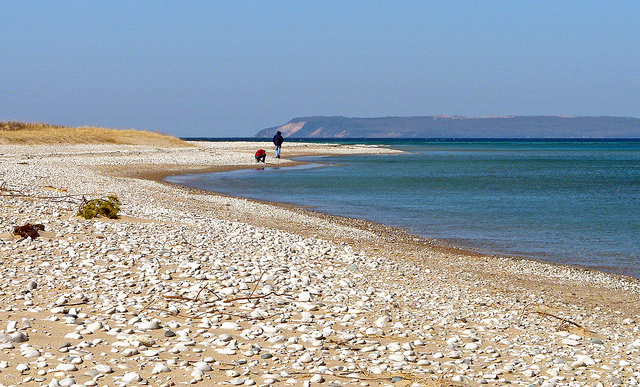For Michigan shore-dwellers, life’s a beach, and that’s the problem
Talk to enough Great Lakes shoreline property owners, and, sooner or later, you're bound to hear this lament: "If it's not my property, why do they keep sending me the property tax bills?"
Chances are the lamenter is referring to a particular part of his property. The most attractive part. The very part, in fact, that makes beachfront property so desirable:
The beach.
Which is precisely the part the property owner doesn't really own. He can't for example, chase people off it, and although he may plant his beach umbrella in this little no-man's land caressed by the waves, he'd better not disturb any plant roots in the process.
In Department of Environmental Quality terms, the sweet spot goes from the edge of the water to the "ordinary high water mark."
So, how does a property owner know an "ordinary high water" mark when he sees it? The Michigan Supreme Court defines it this way:
"The point on the bank or shore up to which the presence and action of the water is so continuous as to leave a distinct mark either by erosion, destruction of terrestrial vegetation, or other easily recognized characteristic. And where the bank or shore at any particular place is of such a character that is impossible or difficult to ascertain where the point of ordinary high-water mark is, recourse may be had to other places on the bank or shore of the same stream or lake to determine whether a given stage of water is above or below ordinary high-water mark."
If you think that sounds a little murky, you have lots of company.
Actually the Natural Resources and Environmental Protection Act of 1994 provides a more precise definition, assigning elevations above sea level for the ordinary high-water marks of each of the Great Lakes - 579.8 feet, for example, for Lakes Michigan and Huron.
Is that number really of any use to a property owner with an urge to disturb some plant roots on a Saturday afternoon?
But let's assume the property owner can, indeed, identify the high-water mark, Public Act 247 of 2012 defines, to some extent, what he can and cannot do to it. He can, for example, remove vegetation by "hand pulling" or "shallow tilling," but only in "very sparsely vegetated areas." He can level sand. as long as it doesn't cause "alteration of the natural lakeshore contours." He can remove debris "by raking or dragging, pushing or pulling metal teeth," but only if doesn't result in "disturbance of, or destruction to, plant roots."
As for the question of who has a right to tread on this property, the law is more precise. Sort of. In the landmark 2005 case of Glass v. Goeckel, the state Supreme Court ruled that everybody has the right to walk within the "public trust zone." The court majority defined this area as below the high-water mark. Water levels vary greatly along Great Lakes shorelines, and the ordinary high water mark provides a consistent line - regardless of temporary lake levels - below which public trust rights are guaranteed. The majority ruled public trust rights and private ownership can co-exist on the same stretch of shoreline.
As a owner of beach property on northern Lake Huron, I believe this is a good thing. This land, as Woody Guthrie said, was made for you and me, and people should be able to walk the Great Lakes coastlines without having to climb fences, or risk the wrath of territorial property owners. However … however, I just might become a little less sanguine if a rowdy bunch with a boombox and a case of beer decided to spend the day on the "public trust zone" in front of my cottage.
If a person can walk the shoreline in front of private cottages, can he stop there? For how long? Can he build a bonfire? Can he beach his boat on the sand in front of private property, and party all night? The Supreme Court didn't open that can of worms. It declined to dive into all the possible dos and don'ts, probably because there would be no end to such a list.
Most likely they'll be hammered out, one by one, in court cases to come.
See what new members are saying about why they donated to Bridge Michigan:
- “In order for this information to be accurate and unbiased it must be underwritten by its readers, not by special interests.” - Larry S.
- “Not many other media sources report on the topics Bridge does.” - Susan B.
- “Your journalism is outstanding and rare these days.” - Mark S.
If you want to ensure the future of nonpartisan, nonprofit Michigan journalism, please become a member today. You, too, will be asked why you donated and maybe we'll feature your quote next time!


 As rumors of spring’s approach fly, Great Lakes shoreline landowners prepare for the annual philosophical debate: Whose beach is it, anyway? (Photo by Flickr user jimflix; used under Creative Commons license)
As rumors of spring’s approach fly, Great Lakes shoreline landowners prepare for the annual philosophical debate: Whose beach is it, anyway? (Photo by Flickr user jimflix; used under Creative Commons license)